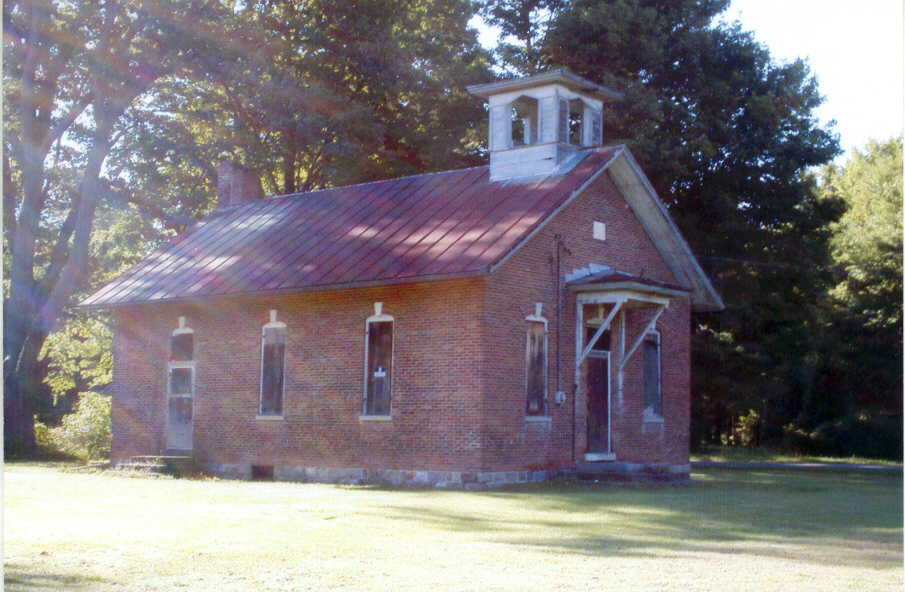

FLOWERFIELD - In 1827 Mishael (Michael) Beadle, a mill builder from Ohio, moved his family to Mottville. In late 1828 or early 1829, they migrated to Flowerfield and became the first white settlers in that area. At that time Flowerfield encompassed the entire top of S. Joseph County, which included Park, Mendon, and Leonisdas. In 1833 Mendon joined Nottawa and Leonidas joined Colon. In 1838 Park also detached leaving the current township of 35.9 square miles or 22, 931 acres.
In 1830 Beadle built a dam and a sawmill then in 1831 a gristmill. The gristmill burned in 1832 and was rebuilt that same year. It was sold to another settler that came in 1831, Challenge Wheeler, who opened the first store and became the first post master. Beadle built the first log home, the first frame house, and planted the first crop. His daughter was also the first white married in the township. In 1833 Beadle and his family moved to Three Rivers to complete a mill started by Jacob McInterfer. Beadle died in Three Rivers in 1839 and is buried in the Beadle cemetery in Fabius Township. The early Flowerfield village had a tavern, which doubled for the first church service (they had to roll the rum keg the designated distance before the service could be held), a distillery owned by three enterprising young unmarried men, the sawmill, flour mill, general store, a cider mill, a vinegar factory and a blacksmith. A stagecoach traveling from White Pigeon to Bronson stopped by Barnum's tavern. There was a bounty of $5 on wolf pelts and hogs less than 40 pounds were not considered trespassers. Indian children and the children of the settlers played together. Three major Indian trails led through the village, one went to South Bend, one to St. Joseph, and one to Blue Crane marsh.
By 1858 the village was a thriving comunity with two physicians, a mercantile, a miller, a blacksmith, a manufacturer of plows and wagons, a wool carding factory, a grain and cradle factory. They also had a school, a church and a cemetery. By 1873 the township harvested 4,060 acres of wheat, 1,869 acres of corn, 6,482 bushels of other grains, 4,479 bushels of potatoes, 1,569 tons of hay, 9,832 pounds of dried fruit, 544 barrels of cider, 18 gallons of wine, and 100 pounds of maple sugar. They also produced 9,992 bushels of apples and 297 bushels of other fruit. The township had two settlements, Flowerfield and Howardsville, each with a sawmill and a flour mill.
Time has taken a harsh toll on the villages. The landscape denies any evidence of the floating bridge on section 25. Dams have broken, buildings have burned, but the people still remember. The Howardsville School built in 1845 still stands as the Flowerfield Township Hall. A school was built in 1853 and sold to a Baptist congregation. Its replacement, which was built in 1892, has another Baptist congregation in it today. The little brick schoolhouse still stands among the ancient trees.
 |
A little brick schoolhouse in Flowerfield Township still stands today as a reminder of its history. |
The township is still an agricultural community Crops include soybeans, corn, beans, potatoes, alfalfa, and wormwood. Hunting and fishing areas are abundant. The 2000 census records a population of 1,592 residents. The average elevation in St. Joseph County is 870 feet but about half a mile east of Bent Road and less than a quarter of a mile from Mt. Zion, the elevation is about 1,033 feet, making it one of the highest points in the county. The other high point is in Sherman Township. The Zoning Committee is active in preparing for the future of the township as well as preserving the past. On Jan. 31 at 6:30 p.m. at the township hall, they will be having a meeting concerning the future land use of the township options to preserve farmland, open space and rural character. All residents of the township are encouraged to attend.
This page was last modified <Saturday, 05-Aug-2017 20:03:52 MDT>
![]() This website is created and copyrighted 2007 by Joel Newport
This website is created and copyrighted 2007 by Joel Newport